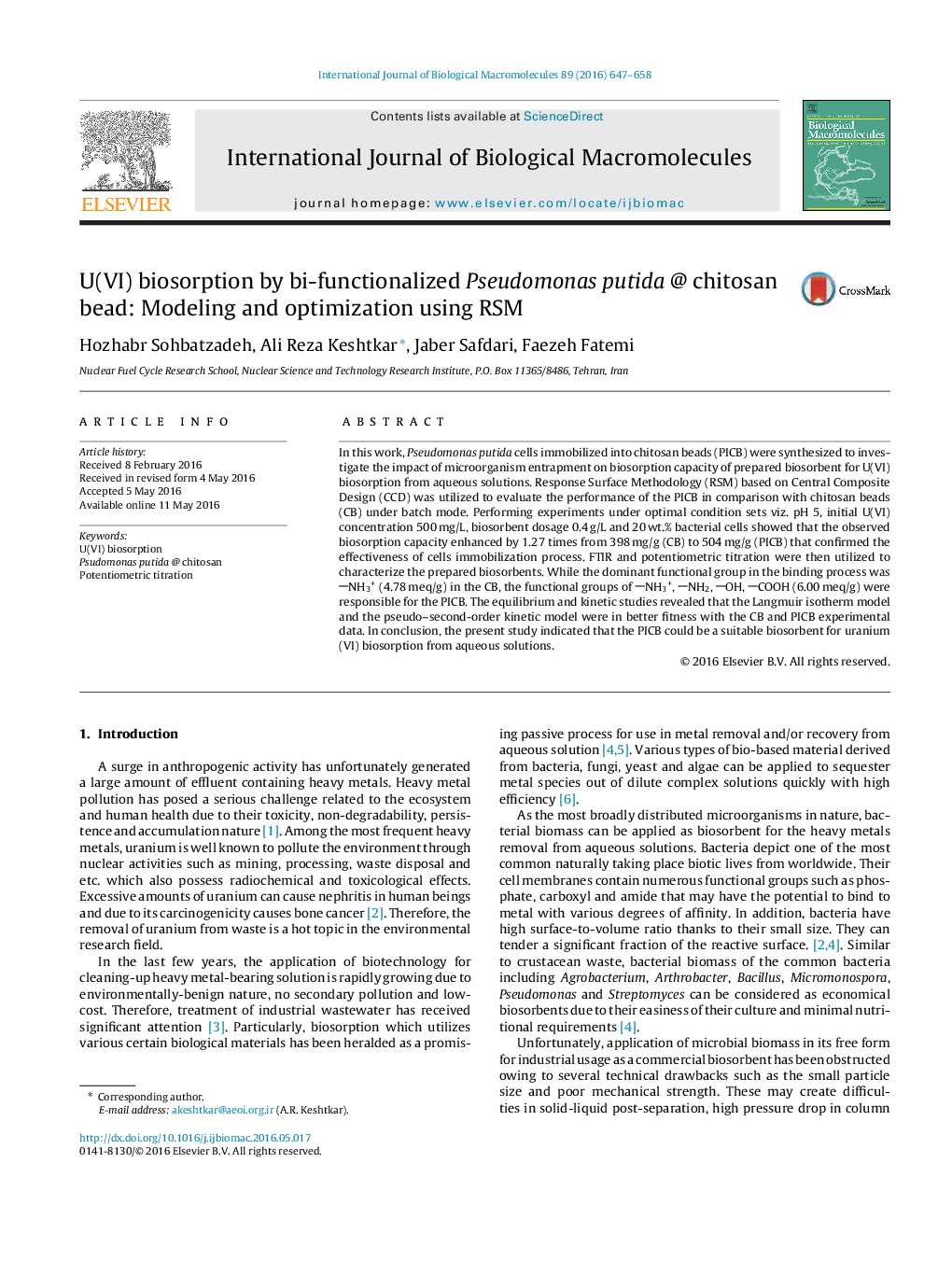| کد مقاله | کد نشریه | سال انتشار | مقاله انگلیسی | نسخه تمام متن |
|---|---|---|---|---|
| 1985775 | 1540231 | 2016 | 12 صفحه PDF | دانلود رایگان |

• Pseudomonas putida cells are immobilized into chitosan to form a bi-functional biosorbent (PICB).
• The investigation is focused on the PICB ability to remove uranium via biosorption.
• Operational parameters involved in uranium biosorption are discussed.
• Response surface methodology is utilized to model and optimize the process.
• Possible functional groups presented in the surface of the PICB are elucidated.
In this work, Pseudomonas putida cells immobilized into chitosan beads (PICB) were synthesized to investigate the impact of microorganism entrapment on biosorption capacity of prepared biosorbent for U(VI) biosorption from aqueous solutions. Response Surface Methodology (RSM) based on Central Composite Design (CCD) was utilized to evaluate the performance of the PICB in comparison with chitosan beads (CB) under batch mode. Performing experiments under optimal condition sets viz. pH 5, initial U(VI) concentration 500 mg/L, biosorbent dosage 0.4 g/L and 20 wt.% bacterial cells showed that the observed biosorption capacity enhanced by 1.27 times from 398 mg/g (CB) to 504 mg/g (PICB) that confirmed the effectiveness of cells immobilization process. FTIR and potentiometric titration were then utilized to characterize the prepared biosorbents. While the dominant functional group in the binding process was NH3+ (4.78 meq/g) in the CB, the functional groups of NH3+, NH2, OH, COOH (6.00 meq/g) were responsible for the PICB. The equilibrium and kinetic studies revealed that the Langmuir isotherm model and the pseudo–second-order kinetic model were in better fitness with the CB and PICB experimental data. In conclusion, the present study indicated that the PICB could be a suitable biosorbent for uranium (VI) biosorption from aqueous solutions.
Figure optionsDownload as PowerPoint slide
Journal: International Journal of Biological Macromolecules - Volume 89, August 2016, Pages 647–658